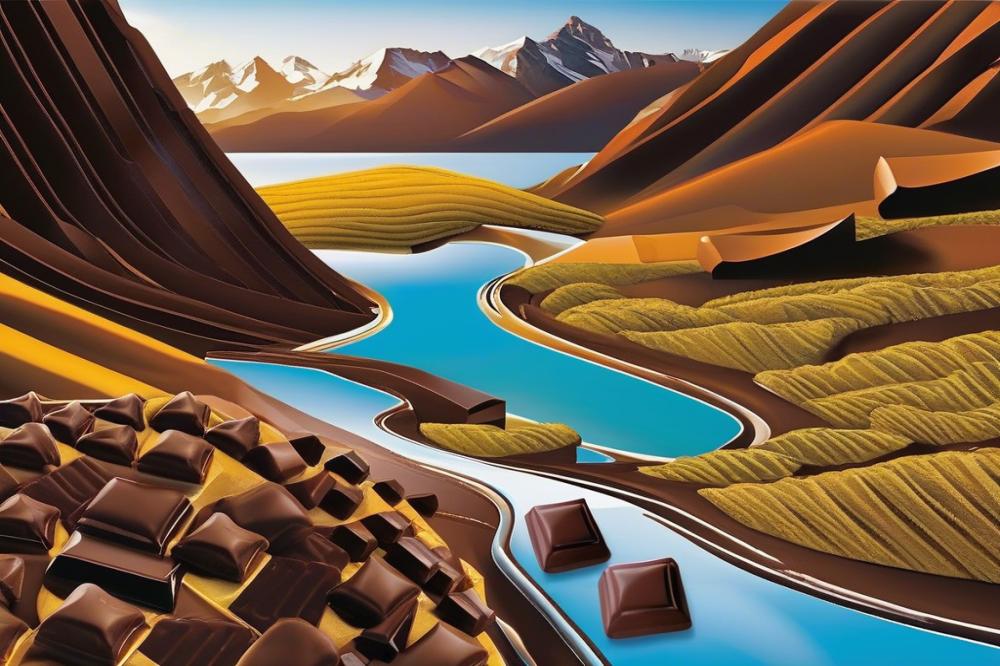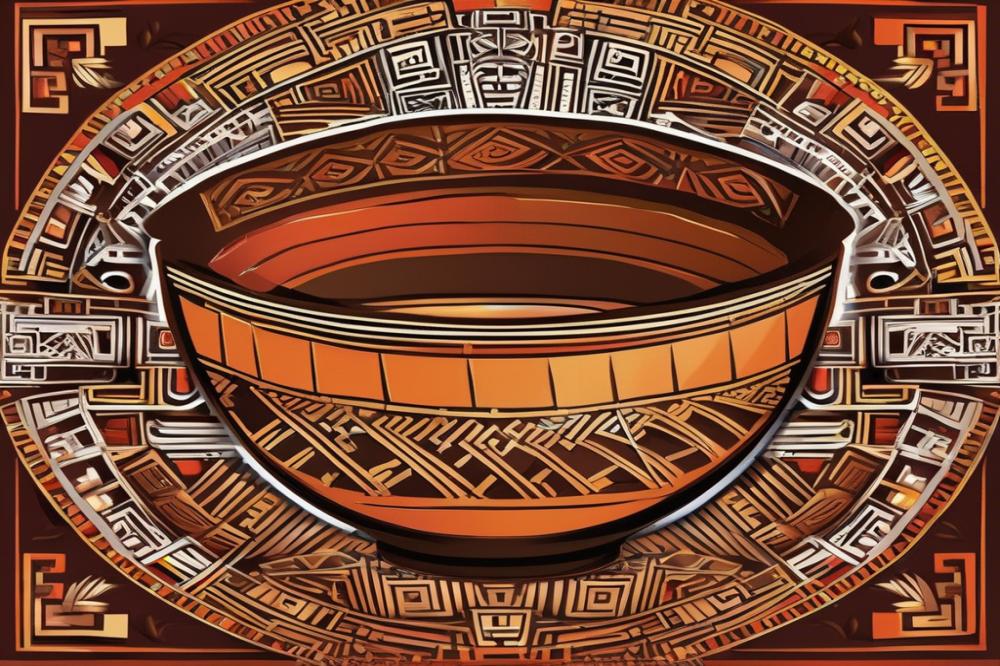Switzerland’s Sweet Obsession: Exploring the Nation’s Love for Chocolate
Sweet Beginnings
Switzerland is often celebrated as a leading consumer of chocolate in Europe. It has a rich tradition that dates back centuries. People in this nation enjoy their confectionery delights more than most. Statistics reveal that each Swiss citizen consumes, on average, about 11.6 kg of chocolate annually. This figure speaks volumes about how deeply embedded chocolate is in the Swiss lifestyle.
Chocolate holds a significant place in Swiss culture. It transcends mere indulgence. This beloved treat plays an important role in family gatherings and celebrations. Additionally, Swiss chocolatiers are known for their high-quality chocolate manufacturing, which involves rigorous standards and creative techniques. From artisanal chocolate to mass-produced bars, the range is impressive.
Economically, chocolate has a substantial impact on Switzerland. The industry thrives, bolstered by both local consumption and export markets. Chocolate tourism has grown, inviting visitors to explore various chocolate festivals. These events celebrate the craft and history of this sweet treat, offering tastings that entice locals and tourists alike. The world of Swiss chocolate extends beyond delightful flavors; it embodies a rich history of craftsmanship and passion.
In this article, we will explore the nuances of chocolate culture in Switzerland. We will delve into how these elements shape the national identity and contribute to the allure of Swiss chocolate.
Swiss Chocolate: A Culinary Delight

What makes chocolate from Switzerland so special? The answer lies in the careful attention given to its quality and ingredients. cocoa stands at the heart of this equation. Without high-quality cocoa beans, no chocolate can achieve the rich flavor and smooth texture that people crave. Swiss chocolatiers take pride in sourcing the finest cocoa, often from specific regions known for their exceptional beans.
Chocolate manufacturing in Switzerland goes beyond simple production. It involves a deep understanding of flavor profiles and techniques. Artisanal chocolate makers explore different methods of chocolate tasting, making each product an experience. They experiment with blends and roasts, which leads to delightful variations. This commitment to quality has helped shape chocolate history in Switzerland.
Furthermore, Swiss chocolatiers have greatly contributed to the wider confectionery industry. They are pioneers in creating not just a product, but an entire culture around chocolate. By hosting chocolate festivals, they invite everyone to indulge in their creations. These events celebrate the love of chocolate and make it accessible to all. Some tourists even plan their trips around the country’s famous chocolate experiences, proof that chocolate tourism has become a significant part of Switzerland’s charm.
This nation’s obsession with chocolate inspires creativity and devotion among its makers. Each piece reflects years of tradition and innovation. Chocolatiers here often share their craft with visitors, making the experience even more special. As a result, Swiss chocolate products enjoy a reputation that goes beyond borders, enticing chocolate lovers everywhere.
Chocolate Manufacturing in Switzerland

Swiss chocolatiers are renowned for their exceptional craftsmanship. The entire chocolate manufacturing process starts with high-quality cocoa. Sourcing cocoa beans is crucial, as they form the foundation of the final product. Nuts, fruits, and spices are sometimes added to enhance flavors, creating artisanal chocolate. Various confections are produced in small batches. This method preserves unique flavors and maintains a personal touch.
Insight into the Chocolate Manufacturing Processes
First, cocoa beans undergo fermentation. This step develops the beans’ flavor before drying them under the sun. After drying, they are roasted to bring out the chocolate’s rich taste. Grinding follows, turning the roasted beans into a fine paste known as chocolate liquor. From here, different processes occur, including conching and tempering. Conching mixes chocolate paste while exposing it to heat and air. This process improves smoothness. Tempering stabilizes the chocolate, ensuring it has a nice shine.
The Significance of High Standards and Quality Control
Quality control is vital throughout chocolate production. Each stage requires strict oversight to meet high standards. This attention to detail is evident in the final product. Swiss chocolatiers take immense pride in creating chocolate products that are not only delicious but also visually appealing. Continuous quality checks are performed to ensure consistency and excellence. Many producers embrace traditional methods while integrating modern techniques. They aim not just for taste but also for the best experience during chocolate tasting events.
Impact of Technology and Innovation in Chocolate Production
Technology greatly influences chocolate manufacturing today. Automation streamlines many processes, increasing efficiency and precision. However, innovation does not take away from the artisanship of Swiss chocolatiers. The use of advanced equipment helps maintain high standards while allowing for unique designs in confectionery. Furthermore, recent trends in sustainability and eco-friendly practices are shaping the industry. Chocolate tourism is growing, with many visitors eager to see chocolate-making demonstrations. Festivals celebrate this sweet obsession, showcasing new products and flavors.
Artisanal Chocolate and Local Producers
Switzerland is famous for more than just its beautiful mountains. Artisanal chocolate plays a big role in the nation’s sweet identity. Small-scale producers craft chocolate by hand, focusing on quality rather than quantity. These chocolatiers pride themselves on the process, often using traditional techniques passed down through generations.
Craftsmanship of Small-Scale Chocolatiers
Each bar or praline tells a story. Local chocolatiers dedicate hours to perfecting their recipes, experimenting with flavors and textures. The passion these artisans have for their craft is evident in every bite. Unlike mass production, these small businesses prioritize care over efficiency. Consumers often enjoy visiting these shops to learn about chocolate history and production methods. They may even take part in chocolate tasting events, where samples reveal the depth of flavor possibilities.
Sourcing Quality Cocoa
Quality cocoa is crucial for making exceptional chocolate products. Many artisans work hard to source their cacao beans directly from farmers. This practice not only supports sustainable farming but also enhances flavor. Knowing where the cocoa comes from adds depth to the chocolate experience. Some chocolatiers even visit cacao farms to understand the process intimately. This direct relationship fosters a commitment to excellence that is hard to replicate in larger factories.
Furthermore, chocolate festivals around the country celebrate these local artisans. Events showcase their creativity and skill, drawing in chocolate tourism enthusiasts from all over the world. Whether through a simple truffle or a complex layered dessert, handcrafted goodies have a unique charm. Each piece offers a different taste adventure, making Swiss artisanal chocolate a delightful treasure to explore.
A Rich Chocolate History
The journey of chocolate in Switzerland is a fascinating tale that began centuries ago. In the early 19th century, chocolate was primarily a beverage enjoyed by the elite. It was bitter and not very sweet. The transformation began when Swiss chocolatiers started experimenting with cocoa. They introduced sugar, which made the drink more appealing to a broader audience.
Key milestones mark the evolution of chocolate manufacturing in Switzerland. In 1826, François-Louis Cailler opened the first chocolate factory in Corsier-sur-Vevey. This event laid the groundwork for the country’s booming confectionery industry. In 1875, a breakthrough occurred when Daniel Peter partnered with Henri Nestlé. They combined chocolate with milk, creating milk chocolate. This invention significantly boosted the popularity of chocolate products throughout Europe.
Several historical events influenced chocolate consumption in Switzerland. As the Industrial Revolution reshaped the economy, production techniques improved. Mass production became possible, allowing more people to enjoy chocolate. Additionally, during times of war, chocolate often served as a valuable source of energy for soldiers. Wartime needs helped develop new recipes and formulations that appealed to a wider audience.
Today, visitors can experience the legacy of Swiss chocolate through chocolate tourism. Various chocolate festivals celebrate this rich tradition, showcasing artisanal chocolate and innovative creations. Enthusiasts can indulge in chocolate tasting events, allowing them to appreciate the depth of flavors. Western Switzerland boasts numerous chocolatiers who dedicate themselves to crafting quality products. Their passion reflects the nation’s sweet obsession and commitment to excellence in every bite.
Chocolate Tasting and Culture
Switzerland is famous for its deep-rooted chocolate tasting traditions. Chocolate tasting is not merely a treat; it’s an experience. People gather at chocolate festivals throughout the year to celebrate this beloved confectionery. Events often include tastings, where one can sample various chocolate products from local makers.
Flavor profiles play a crucial role in enjoying chocolate. Many factors influence the taste of chocolate, including the cocoa beans used and the methods of chocolate manufacturing. Artisanal chocolate often showcases distinct flavors. For example, single-origin chocolates highlight regional influences on taste.
Learning how to taste chocolate is essential for a full appreciation of its nuances. Start by observing the chocolate’s appearance. Notice the shine and color. Next, break a piece and listen to the snap, which signals quality. Allow it to melt gently on the tongue. This helps in discovering the layers of flavor.
Switzerland’s rich chocolate history contributes to its diverse offerings. Swiss chocolatiers have perfected their craft over generations. Each chocolatier brings a personal twist to their creations. Trying different varieties is a great way to explore this range. Consider attending local chocolate tourism tours to learn more directly from the makers.
Guidelines for tasting chocolate can enhance the experience further. Sample chocolates in a quiet space to appreciate the flavor without distractions. Additionally, cleanse your palate between different types. Water or bread can help reset your taste buds. Sharing thoughts with friends during tastings creates a fun atmosphere.
Engaging in chocolate tasting can lead to a greater appreciation for this delightful treat. Not only does it showcase the skill of chocolatiers, but it also celebrates their passion for the craft. Overall, tasting chocolate invites everyone to explore the complex and satisfying world of flavor.
Chocolate Festivals and Events
Overview of Popular Chocolate Festivals in Switzerland
Switzerland hosts numerous chocolate festivals throughout the year. These events draw in locals and tourists alike. The Salon du Chocolat in Geneva features renowned chocolatiers from around the globe. Another notable event is the Chocolate Festival in Zermatt, which combines delicious treats with stunning mountain views. Participants can revel in the wonders of cocoa at the World Chocolate Master competition in Zurich. Each festival showcases the diversity of confectionery from various regions.
Role of These Events in Promoting Swiss chocolate culture
These festivals play a crucial role in preserving and sharing chocolate history. They create opportunities for Swiss chocolatiers to demonstrate their skills. Visitors learn about chocolate manufacturing techniques that have been refined over generations. Festival activities often include workshops where attendees can discover the art of crafting artisanal chocolate. Additionally, these events contribute to chocolate tourism, attracting individuals eager to experience the rich flavors of this beloved sweet.
Activities and Experiences Offered During Chocolate Festivals
Attendees can expect an array of exciting activities. Chocolate tasting sessions allow guests to savor various blends and textures. Interactive demonstrations often feature expert chocolatiers showing how to temper chocolate properly. Games and contests provide fun for all ages. Some festivals even offer guided tours to local chocolate factories. Engaging with live music and entertainment enhances the overall festive atmosphere. Through these experiences, visitors gain a deeper appreciation for chocolate products and their rich origins.
Chocolate Tourism in Switzerland
Chocolate tourism offers visitors an exciting way to explore Switzerland’s deep connection with cocoa. Tourists flock to the country for a taste of its rich confectionery traditions. Guided tours through chocolate manufacturing facilities showcase the skills of Swiss chocolatiers. Many of these artisans still use time-honored techniques passed down through generations.
Chocolate tasting events are a significant draw for visitors. Guests sample an array of chocolate products, from creamy truffles to dark bars. Pairing chocolate with local wines adds another dimension to these experiences. Many shops in cities like Zurich and Geneva offer tasting sessions, where tourists can learn about the subtleties of different flavors.
Some travelers join chocolate-themed tours that delve into the history of this delicious treat. Along the way, they discover how Switzerland became a global leader in chocolate production. From the origins of Swiss chocolate to current trends, these journeys are both educational and indulgent. Visitors often leave with a new appreciation for the complex process behind their favorite sweets.
Annual chocolate festivals fill the calendar, attracting crowds eager to indulge. Events feature live demonstrations, where chefs create masterpieces in real-time. Local delicacies are often on display, highlighting regional specialties. Visitors can stroll through stalls filled with artisan treats, enhancing their culinary adventure.
Unique attractions like chocolate museums further enhance the chocolate tourism experience. These museums educate guests about the history and science of chocolate. Interactive exhibits allow for hands-on learning, making the experience engaging for all ages. Families, couples, and solo travelers will find something to enjoy.
Chocolate-themed experiences extend beyond tours and tastings. Many hotels offer special packages that include chocolate spa treatments and gourmet dinners. These experiences create unforgettable memories while integrating indulgence into relaxation. Travelers cherish these moments, often sharing them on social media to inspire others.
Wrapping It Up: A Chocolate Affair
Switzerland’s deep-seated passion for chocolate is more than just a sweet treat. This nation has transformed cocoa into a cultural treasure. For many people, Swiss chocolate symbolizes quality and craft. It’s not simply about taste; it’s woven into the country’s identity. The rich history of artisanal production has set Switzerland apart on the global map of confectionery.
Tourism greatly benefits from this love affair with chocolate. Travelers flock to chocolate shops and factories, eager to learn about the meticulous craftsmanship behind each bar. Visitors enjoy guided tours, tastings, and events that highlight the artistry of Swiss chocolatiers. Such experiences connect tourists to the local culture in a delicious way. Friends and families can bond over tasting sessions, savoring each bite of heritage.
Indulging in this delightful experience is essential. When exploring Switzerland, sample the creations of esteemed chocolatiers. You will discover flavors that inspire joy and create lasting memories. Remember, the next time you savor a piece of fine chocolate, think of the Swiss artisans who crafted it. Travel and tasting opportunities in Switzerland offer you a unique chance to engage with something special.



